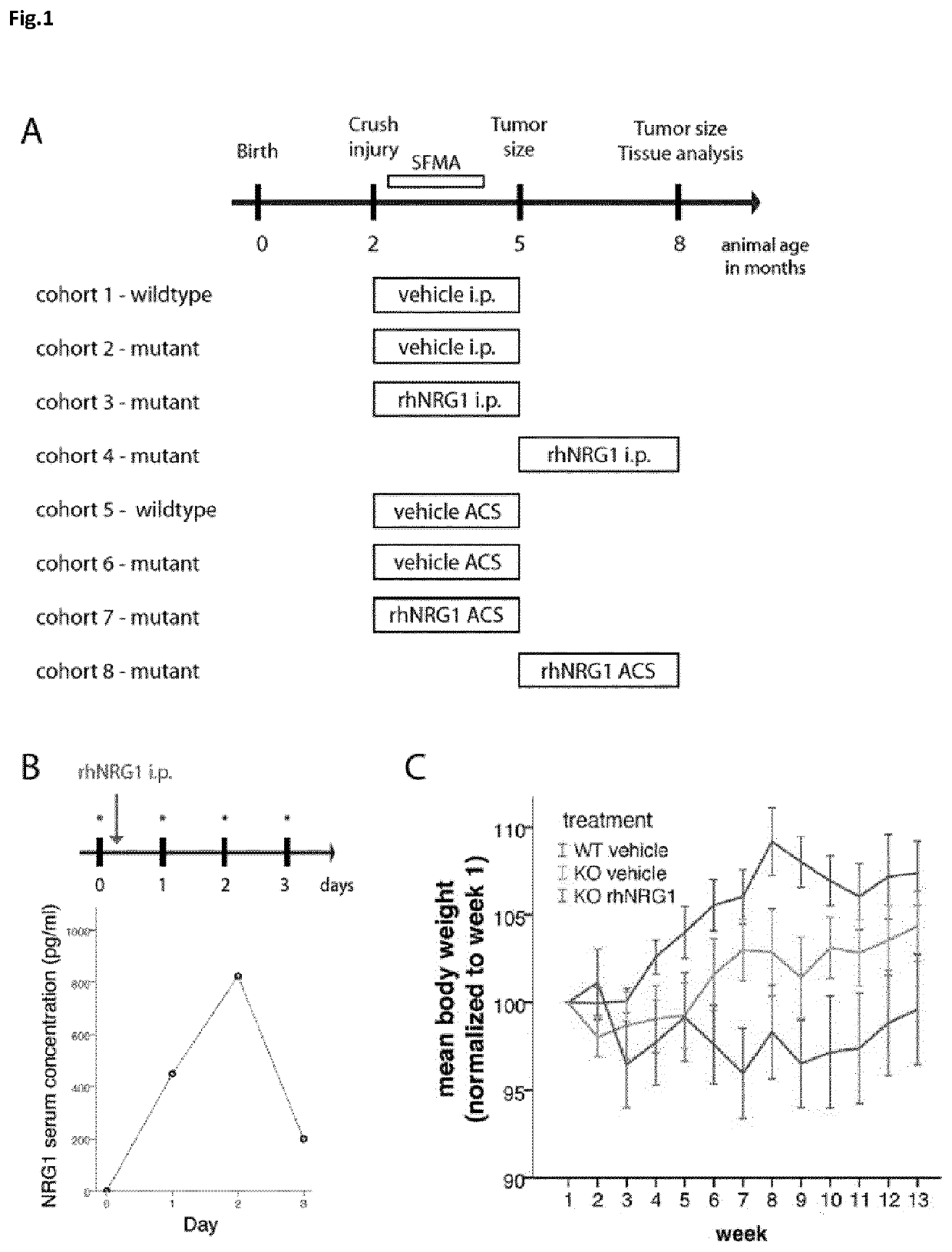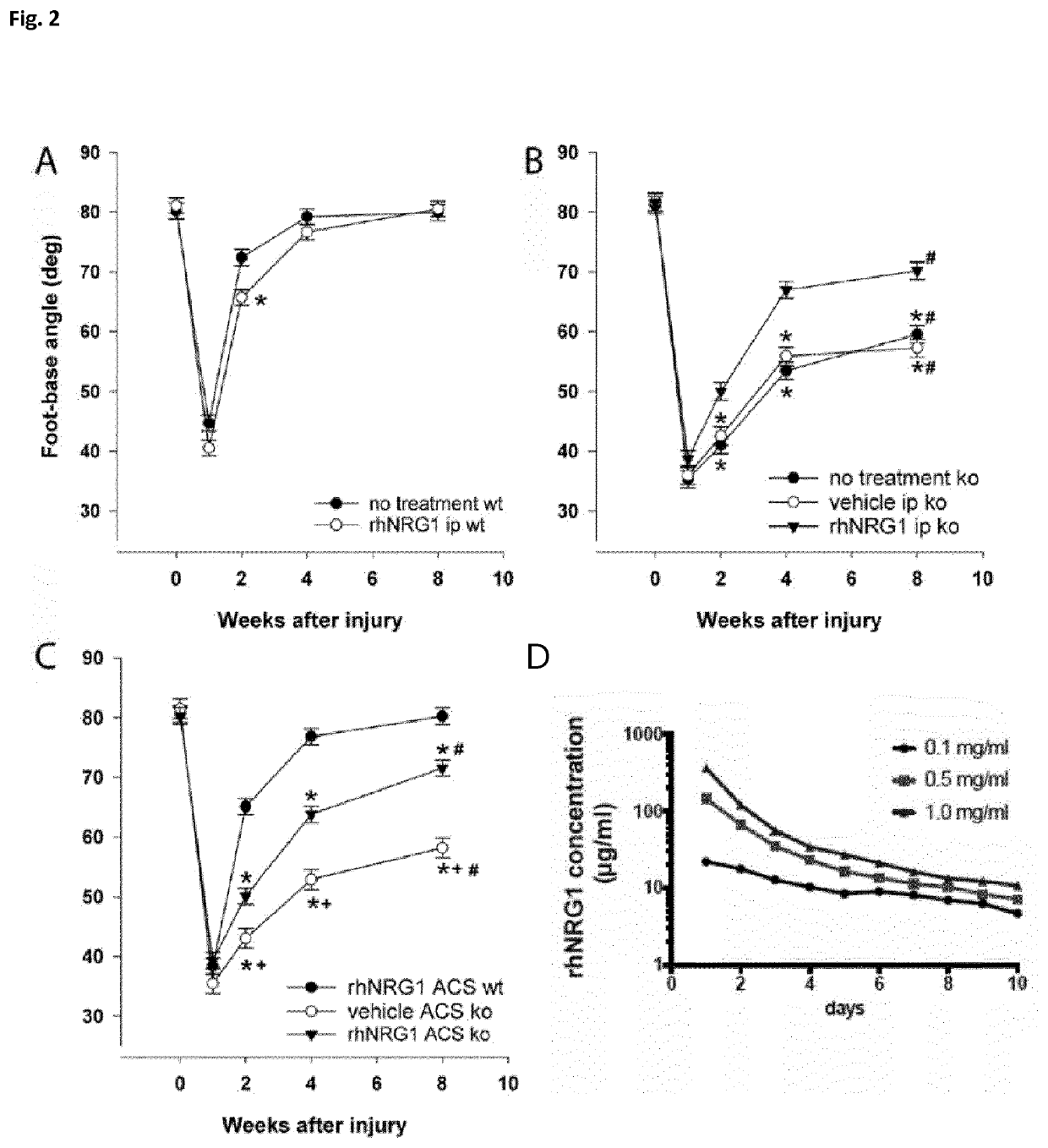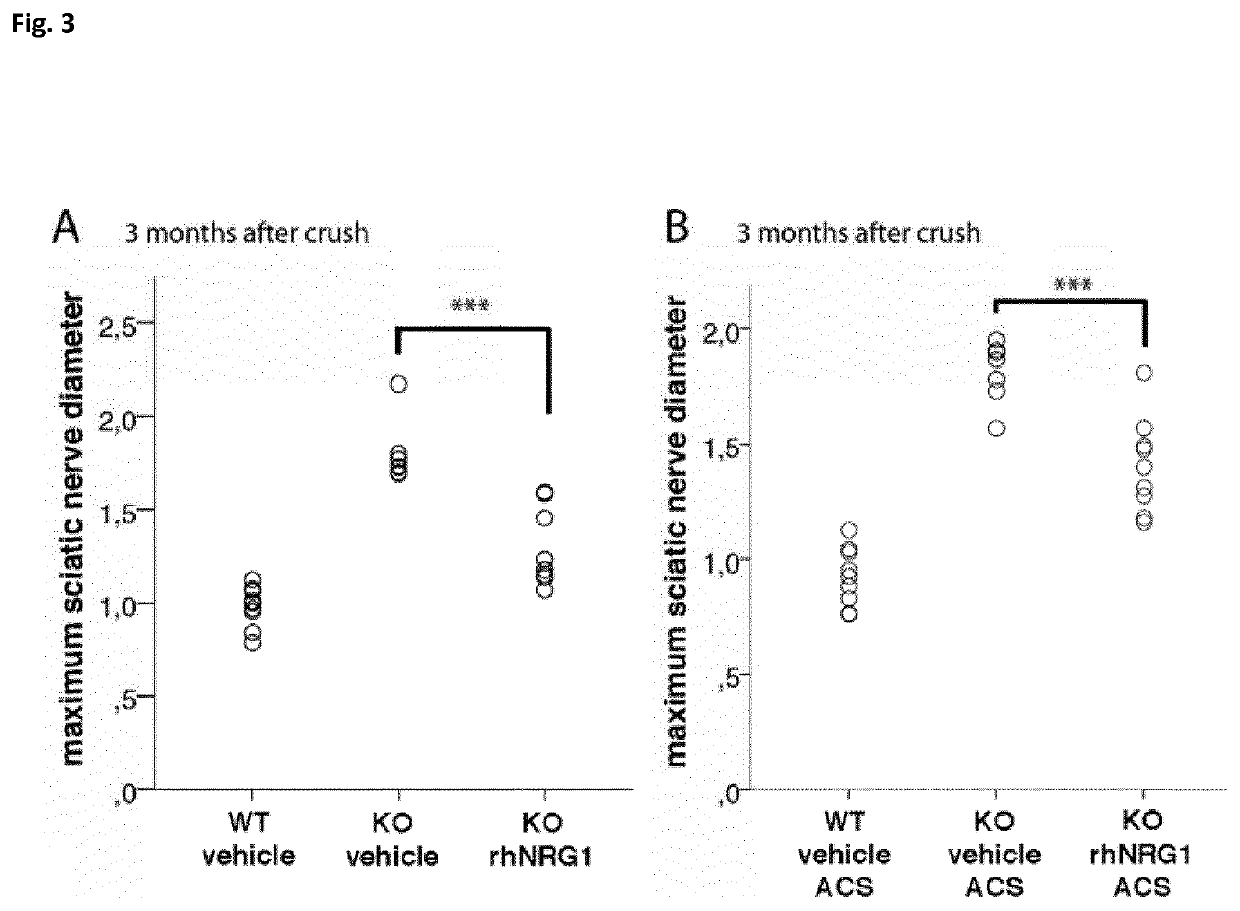Neuregulin for the treatment and/or prevention of tumors of the nervous system
a nerve system tumor and neurofibromin technology, applied in the direction of antineoplastic agents, drug compositions, peptide/protein ingredients, etc., can solve the problems of secondary abnormalities of the nerve system, negative influence of cell proliferation, and neurofibromin expression throughout the nervous system, so as to avoid protein clustering or precipitation, increase specificity, and high localization tendency
- Summary
- Abstract
- Description
- Claims
- Application Information
AI Technical Summary
Benefits of technology
Problems solved by technology
Method used
Image
Examples
example 1
rhNRG1 Treatment Animals does not Lead to Body Weight Reduction, but Yields High Levels of Serum
[0154]All mice underwent the defined study protocol as shown in FIG. 1A. Crush injury-induced schwannoma formation was provoked in 2-month-old mice. Subsequently, administration of rhNRG1 was performed both systemically (by intraperitoneal injection) and locally (by rhNRG1-containing absorbable collagen sponges (ACS)). Vehicle saline solution was given to control animals. In order to assess the bioavailability of intraperitoneally injected rhNRG1 (10 μg per kg body weight), rhNRG1 serum levels were evaluated. Strikingly, rhNRG1 levels reached a peak 2 days after injection (FIG. 1B). Because rhNRG1 treatment at high doses was reportedly accompanied by a decrease in body weight (Fledrich et al., 2014), we weekly checked the weight of systemically treated animals. A significant decline in body weight at the chosen dosage was, however, not observed (FIG. 1C).
example 2
rhNRG1 Protein Treatment Improves Functional Recovery After Sciatic Nerve Crush
[0155]It was tested whether rhNRG1 protein replacement can improve functional recovery of mice over a time period of 8 weeks after sciatic nerve crush. Performing single-frame motion analysis (SFMA) showed that systemic rhNRG1 application to wildtype animals does not enhance regeneration (FIG. 2A). However, Nf2flox;PO-Cre;Nefh-Cre mutant mice receiving continuous intraperitoneal rhNRG1 injections every other day displayed significantly improved recovery compared to mice without treatment or saline control (FIG. 2B).
[0156]In addition to the systemic administration of rhNRG1, the efficacy of rhNRG1 on schwannoma growth was investigated when applied locally. To that end, biodegradable and biocompatible absorbable collagen sponges (ACS) were used to load either rhNRG1 protein or saline control solution. ACS have been successfully used for the locally-restricted delivery of proteins in preclinical settings (Fr...
example 3
rhNRG1 Protein Treatment Impedes the Development of Schwannoma
[0158]Sciatic nerve crush injury was conducted on WT mice and Nf2flox;PO-Cre;Nefh-Cre mutant mice as described above. Three months after crush injury wildtype animals showed anatomically regular sciatic nerves with a mean diameter of about 1 mm (WT vehicle, FIG. 3A). In contrast, the sciatic nerve of Nf2flox;PO-Cre;Nefh-Cre mutant mice receiving saline control injections appeared massively enlarged resulting in a 2-fold gain in nerve diameter to about 2 mm (KO vehicle, FIG. 3A). The systemic administration of rhNRG1, however, could significantly ameliorate this nerve swelling and resulted in a reduced nerve diameter of about 1.5 mm (KO rhNRG1, FIG. 3A). Slightly minor effects were seen in Nf2flox;PO-Cre;Nefh-Cre mutant mice receiving a local therapy of rhNRG1 using absorbable collagen sponges (rhNRG1 ACS) when compared to Nf2flox;PO-Cre;Nefh-Cre mutant mice receiving the control therapy (FIG. 3B). 3 months after crush inj...
PUM
| Property | Measurement | Unit |
|---|---|---|
| weights | aaaaa | aaaaa |
| weights | aaaaa | aaaaa |
| weights | aaaaa | aaaaa |
Abstract
Description
Claims
Application Information
 Login to View More
Login to View More - R&D
- Intellectual Property
- Life Sciences
- Materials
- Tech Scout
- Unparalleled Data Quality
- Higher Quality Content
- 60% Fewer Hallucinations
Browse by: Latest US Patents, China's latest patents, Technical Efficacy Thesaurus, Application Domain, Technology Topic, Popular Technical Reports.
© 2025 PatSnap. All rights reserved.Legal|Privacy policy|Modern Slavery Act Transparency Statement|Sitemap|About US| Contact US: help@patsnap.com



